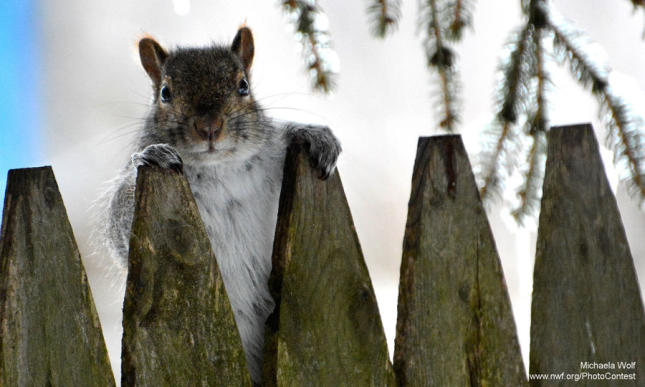January Nature Happenings 2020

• Now through late March is a difficult time for birds; providing food and an open source of water is important. Place a heated birdbath on your deck or close to your bird feeders.
• Watch for mixed flocks of birds to feed on winter berries, poison ivy and cedar trees. This is the reason Eastern Red Cedar is the first tree introduced on vacant pastureland. AND the same reason Poison Ivy pops up in your flower garden in the spring.
• Project FeederWatch continues, www.birds.cornell.edu/pfw
• Woodpeckers are easy to spot on leafless trees. In this area we have the following woodpeckers: Red-bellied, Hairy, Downy, Red-headed, Pileated, Northern Flicker and Yellow-bellied Sapsuckers.
• Barred Owls will begin their “Who cooks for you” hoots and begin mating by mid-January. Make sure nesting boxes are ready to use.
• During late January and early February, Great Horned Owls will be sitting on their eggs. Listen for their “hoots” as they are still paring up. No need for a nesting box as they use the nesting sites from other large birds even to the extent of stealing a Bald Eagles nest.
• Bald Eagles will begin rebuilding nests and by the end of February can be incubating eggs. Look for extremely large nests in the tops of mature trees.
• Look and listen for the Short-eared Owl. They are only here during the winter, leaving late winter for breeding in Canada. Best time to see the Short-eared owl is dawn and dusk, flying close to the ground “listening” for their prey.
• Late in the month, as days lengthen, Tufted Titmice and cardinals begin to sing. Cardinals flocking; they're usually the first and last birds to be seen at feeders. Set your feeders close to forest edge, bushes and trees for protection.
• Look for hawks such as Red-tailed, Cooper’s and Sharp-shinned in your backyard.
• Peak of Bald Eagle migration
• Waterfowl are present on deep-water lakes. Go to Lake Frederick and Abrams Creek Wetlands to observe many winter residents like Scaups, Gadwalls, Grebes and the Cackling Goose.
• Start planning your butterfly and bird gardens this month.
• Skunk Cabbage is the first flower of the year to bloom. Look for it in marshy, wetland areas towards the end of the month.
• Tired of squirrels? Unfortunately January is the first of two Squirrel mating seasons. On average they will produce 4 Pups per litter. However, if you love squirrels, time to put up a squirrel nesting box.
• White-tailed Deer bucks are beginning to shed their antlers.
• Earthworms burrow below the frost line and become dormant.
SPECIAL DATES
• January 1 – NEW YEARS DAY, WBU CLOSED
• January 3, 4 - Quadrantids Meteor Shower Peaks. The Quadrantids is an above average shower, with up to 40 meteors per hour at its peak. Best viewing will be from a dark location after midnight on the 4th.
• January 5 - National Bird Day
• January 10 - Full Moon This full moon was known by early Native American tribes as the “Wolf Moon” because this was the time of year when hungry wolf packs howled outside their camps. This moon has also been known as the Old Moon and the Moon After Yule.
• January 21 – Squirrel Appreciation Day! Go to http://blog.nwf.org/2015/01/10-nutty-facts-to-make-you-appreciate-squirrels/ for more interesting facts.
• January 24 – New Moon. Get out the binoculars and telescopes as this is the best time of the month to observe faint object such as galaxies and star clusters as there is no moon to interfere.
• January 24-26 – Winter Wildlife Festival, Virginia Beach. For information go to : https://www.vbgov.com/government/departments/parks-recreation/special-events/Pages/winter-wildlife-festival.aspx
INTERESTING HISTORICAL DATES
• January 11, 1887, Aldo Leopold's (Father of Wildlife Conservation) birthdate. Check out a copy of “A Sand County Almanac” at the library. For more information go to: http://www.aldoleopold.org/AldoLeopold/leopold_bio.shtml
• January 29, 1927, Edward Abby’s birthdate, Environmentalist and Author.
• January 30, 1961, Yogi Bear and his sidekick Boo-Boo hit television screens across America. He originally made a debut with Huckleberry Hound in 1958.
• January 30, 2014, “Greater” the oldest Flamingo in history dies at the age of 83 in the Adelaide Zoo, Australia.
• January 31, 1961, “Ham the Chimp” becomes America’s first Astronaut being the first US Mammal to fly in space using a Mercury Capsule. Later to be followed by the Mercury 7.

